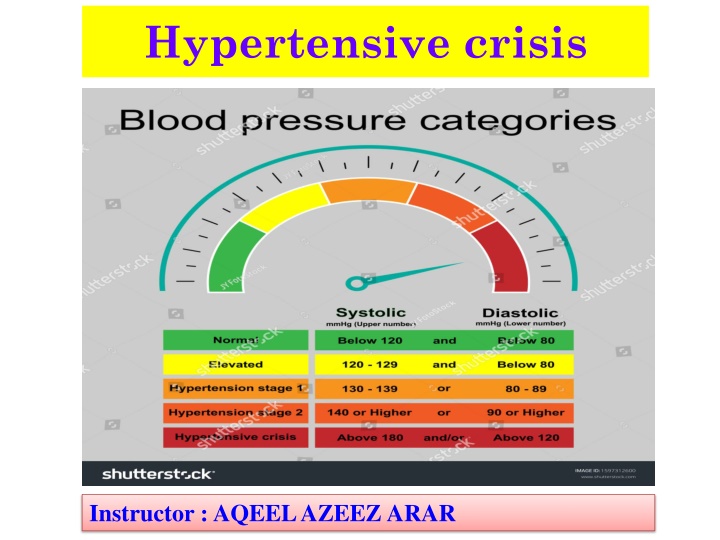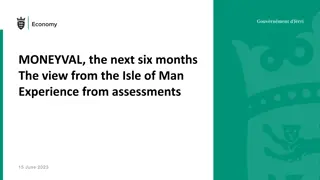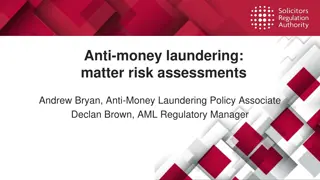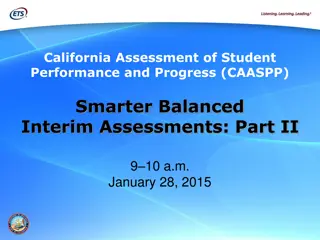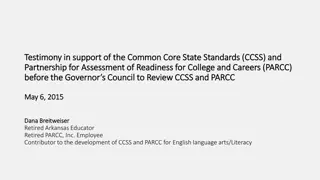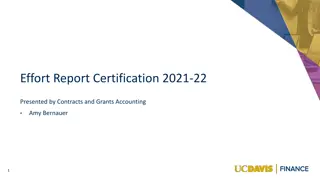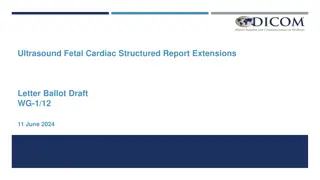Common Core State Standards and Assessments 1
This content discusses the Common Core State Standards and assessments in various content areas such as English language arts, mathematics, and literacy. It delves into the goals of STEM in Florida and emphasizes the importance of synthesizing information from diverse sources for student mastery. The standards focus on enhancing skills in reading, writing, speaking, and problem-solving to prepare students for college and career readiness.
Download Presentation

Please find below an Image/Link to download the presentation.
The content on the website is provided AS IS for your information and personal use only. It may not be sold, licensed, or shared on other websites without obtaining consent from the author.If you encounter any issues during the download, it is possible that the publisher has removed the file from their server.
You are allowed to download the files provided on this website for personal or commercial use, subject to the condition that they are used lawfully. All files are the property of their respective owners.
The content on the website is provided AS IS for your information and personal use only. It may not be sold, licensed, or shared on other websites without obtaining consent from the author.
E N D
Presentation Transcript
Hypertensive crisis Instructor : AQEEL AZEEZ ARAR
Hypertensive crisis A hypertensive emergency (hypertensive crisis) refers to the abrupt, acute, and marked increase in blood pressure from the patient s baseline that ultimately leads to acute and rapidly progressing end-organ damage. Rapid rise Patient s diastolic blood pressure is greater than 120 mm Hg, MAP is greater than 150 mm Hg.
What causes it long histories of chronic poorly controlled untreated primary hypertension secondary hypertension(Cushing s syndrome) How it happens Arterial blood pressure is a product of total peripheral resistance and cardiac output. Cardiac output ( increase heart rate or stroke volume, or both) Peripheral resistance (increase blood viscosity or reduce the lumen size of vessels, especially the arterioles)
Faulty mechanisms Hypertension may result from a disturbance in one of the body s intrinsic mechanisms. Renin-angiotensin system Autoregulation Sympathetic nervous system Antidiuretic hormone.
Up with pressure The renin-angiotensin system increases blood pressure in these ways: Sodium depletion, reduced blood pressure, and dehydration stimulate renin release. Hypertensive crisis typically strikes patients with long histories of chronic, poorly controlled, or untreated hypertension. Renin reacts with angiotensinogen, a liver enzyme, and converts it to angiotensin I, which increases preload and afterload. Angiotensin I converts to angiotensin II in the lungs; angiotensin II is a potent vasoconstrictor that targets the arterioles. Circulating angiotensin II increases preload and afterload by stimulating the adrenal cortex to secrete aldosterone. This increases blood volume by conserving sodium and water.
Maintaining flow In autoregulation, several intrinsic mechanisms together change an artery s diameter to maintain tissue and organ perfusion through (stress relaxation and capillary fluid shifts) In stress relaxation, blood vessels gradually dilate when blood pressure increases, reducing peripheral resistance. In capillary fluid shift, plasma moves between vessels and extravascular spaces to maintain intravascular volume.
Taking control Sympathetic nervous system mechanisms control blood pressure. When blood pressure decreases, baroreceptors in the aortic arch and carotid sinuses decrease their inhibition of the medulla s vasomotor center. Consequent increases in sympathetic stimulation of the heart by norepinephrine increases cardiac output by: strengthening the contractile force raising the heart rate augmenting peripheral resistance by vasoconstriction. Stress can also stimulate the sympathetic nervous system to increase cardiac output and peripheral vascular resistance. The release of antidiuretic hormone can regulate hypotension by increasing reabsorption of water by the kidney.
In reabsorption, blood plasma volume increases, thus raising blood pressure. In hypertensive crisis, one or more of these regulating mechanisms is disrupted. Strain for the brain Hypertensive crisis can result in hypertensive encephalopathy because of cerebral vasodilation from an inability to maintain autoregulation. Blood flow increases, causing an increase in pressure and subsequent cerebral edema. This increase in pressure damages the intimal and medial lining of the arterioles.
Signs and symptoms : severe, throbbing headache vomiting irritability confusion blurred vision or diplopia dyspnea on exertion, orthopnea, or paroxysmal nocturnal dyspnea angina possible left ventricular heave palpated at the mitral valve area S4 heart sound acute retinopathy with retinal exudates.
Check the head If the patient has hypertensive encephalopathy, you may note: decreased LOC disorientation seizures focal neurologic deficits, such as hemiparesis, and unilateral sensory deficits papilledema temporary vision loss. Kidney-related consequences If the hypertensive emergency has affected the kidneys, may note reduced urine output as well as elevated BUN and creatinine levels.
What tests tell you ( Medical diagnosis) Blood pressure measurement confirms the diagnosis of hypertensive emergency. Blood pressure measurement, obtained several times at an interval of at least 2 minutes, reveals an elevated diastolic pressure greater than 120 mm Hg. If there s renal involvement, BUN may be greater than 20 mg/dL and serum creatinine level may be greater than 1.3 mg/dL. ECG may reveal ischemic changes or left ventricular hypertrophy. Echocardiography may reveal increased wall thickness with or without an increase in left ventricular size.
Chest X-ray may reveal enlargement of the cardiac silhouette with left ventricular dilation, or pulmonary congestion and pleural effusions with heart failure. Urinalysis results may be normal unless there s renal impairment; then specific gravity is low (less than 1.010); hematuria, casts, and proteinuria may also be found. Renal ultrasound may reveal renal artery stenosis. CT or MRI of the brain may show cerebral edema or hemorrhage.
How its treated Treatment is focused immediately on reducing the patient s blood pressure with I.V. antihypertensive therapy. However, care must be taken not to reduce the patient s blood pressure too rapidly because the patient s autoregulatory control is impaired. Slow pressure cuts The current recommendation is to reduce the blood pressure by no more than 25% of the MAP over the first 2 hours. Further reductions should occur over the next several days.
( Medical Treatment) Sodium nitroprusside given as an I.V. infusion and titrated according to the patient s response is the drug of choice. labetalol, nitroglycerin (the drug of choice for treating hypertensive emergency when myocardial ischemia, acute MI, or pulmonary edema is present), and Hydralazine (specifically indicated for treating hypertension in pregnant women with preeclampsia). Lifestyle changes may include weight reduction, smoking cessation, exercise, and dietary changes. After the acute episode is controlled, maintenance pharmacotherapy to control blood pressure plays a key role.
Nursing Interventions Immediately obtain the patient s blood pressure. institute continuous cardiac and arterial pressure monitoring to assess blood pressure directly; determine the patient s MAP. Assess ABGs. Monitor the patient s oxygen saturation level using pulse oximetry. Administer supplemental oxygen, as ordered. Administer I.V. antihypertensive therapy as ordered Monitor blood pressure every 1 to 5 minutes while titrating drug therapy, then every 15 minutes to 1 hour as the patient s condition stabilizes.
Continuously monitor ECGs and institute treatment as indicated if arrhythmias occur. Auscultate the patient s heart, noting signs of heart failure, such as S3 or S4 heart sounds. Assess the patient s neurologic status every hour initially and then every 4 hours as the patient s condition stabilizes. Monitor urine output every hour and notify if output is less than 0.5 ml/kg/hour. Evaluate BUN and serum creatinine levels for changes and monitor daily weights. Obtain serum thiocyanate levels after 48 hours of therapy and then regularly thereafter while the patient is receiving nitroprusside.
Administer other antihypertensives as ordered. As the patients condition stabilizes, expect to begin oral antihypertensive therapy while gradually weaning I.V. drugs to prevent hypotension. If the patient is experiencing fluid overload, administer diuretics as ordered. Assess the patient s vision and report changes, such as increased blurred vision, diplopia, or loss of vision. Administer analgesics as ordered for headache; keep your patient s environment quiet, with low lighting.
